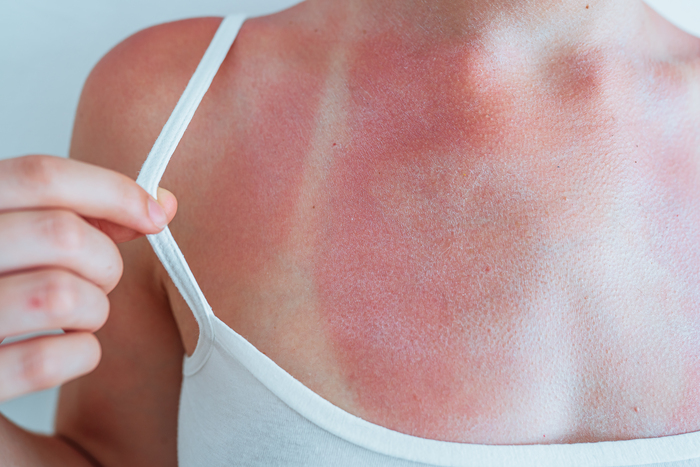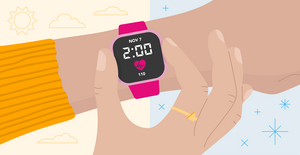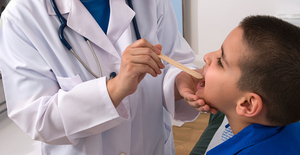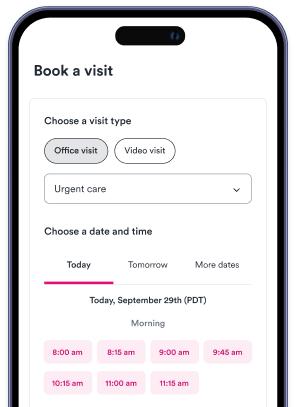Key points
- Aloe vera may not be sufficient for severe sunburns as it lacks strong anti-inflammatory properties and cannot treat infections associated with blistered or broken skin.
- Sunburn severity ranges from mild discomfort to severe symptoms like blisters, intense pain, fever, and nausea, which require more than basic home care.
- Home remedies for sunburn include cooling the skin, moisturizing, managing pain and inflammation, staying hydrated, and avoiding further irritation.
- Severe sunburn symptoms that require urgent care include persistent severe pain, extensive blistering, systemic symptoms like fever, and signs of infection.

We've all been there—enjoying a sunny day only to realize later that our skin is burning, red, and painfully hot to the touch. Sunburn can sneak up on you, and while aloe vera is often the first line of defense, sometimes it’s just not enough. Severe sunburn can lead to intense pain, swelling, and even dehydration, requiring more comprehensive care. Knowing when to seek additional relief is essential for promoting healing and preventing complications. Read on to explore when aloe alone won’t cut it and what other steps you can take to manage a more serious sunburn.
Why aloe might not be enough for severe sunburn
While aloe vera is known for its soothing properties, it may not be enough to heal severe sunburn.
Limitations of aloe vera
Aloe vera is a popular remedy for soothing sunburned skin due to its cooling and moisturizing properties. However, while it can help reduce mild discomfort and dryness, aloe vera doesn’t address deeper issues associated with severe sunburn. It lacks strong anti-inflammatory properties to alleviate significant pain or swelling and won’t treat infections that can develop if the skin is blistered or broken. For more serious burns, additional medical treatments are often necessary.
When to consider stronger treatments
If your sunburn goes beyond mild redness and discomfort, consider stronger interventions. Persistent pain, swelling, or blistering are signs that the skin has suffered more extensive damage. Sunburn can sometimes lead to systemic symptoms like fever, chills, or nausea, indicating a need for medical attention. If you notice signs of infection, such as increased redness, warmth, or pus, seek medical care immediately to prevent complications.
Understanding sunburn severity
Sunburns can vary widely in severity, and knowing the difference can help you decide on the best treatment:
- Mild sunburn typically presents as redness and mild discomfort, which usually improves within a few days.
- Moderate sunburn is more painful, with the skin appearing red, swollen, and tender to the touch.
- Severe sunburn, on the other hand, can cause blisters, intense pain, fever, chills, and nausea. These symptoms signal that the burn has penetrated deeper layers of the skin and requires more than basic home care.
5 Tips for relieving a sunburn at home
When sunburn strikes, quick action can make a big difference in how your skin heals. While severe cases may require medical attention, many sunburns can be managed at home with the right care. Here are some effective at-home remedies to soothe your skin and promote recovery:
1. Cool the skin immediately
The first step in sunburn relief is to cool the affected skin to minimize further damage. Take a cool bath or shower, but be sure to avoid hot water, which can aggravate the burn. If a bath isn’t possible, gently apply a cold, damp cloth to the sunburned areas for relief. Repeat as needed to keep the skin cool and soothe irritation.
2. Moisturize the skin
Keeping your skin hydrated is essential for healing. After cooling your skin, apply a fragrance-free, alcohol-free lotion to lock in moisture. Avoid oil-based creams, as they can trap heat and exacerbate the burn. Opt for lightweight, hydrating products designed to soothe damaged skin without clogging pores.
3. Manage pain and inflammation
Sunburn can be painful and inflamed, so managing discomfort is a priority. Over-the-counter pain relievers like ibuprofen or aspirin can help reduce swelling and alleviate pain. For localized relief, apply a hydrocortisone cream to reduce redness and discomfort. Always follow dosage instructions to ensure safe and effective use.
4. Stay hydrated
Sunburn can lead to dehydration as your body works to repair damaged skin. Drink plenty of water throughout the day to replenish lost fluids and support your body’s healing process. Hydration helps reduce inflammation and keeps your skin moisturized from within.
5. Avoid further irritation
To aid healing, protect your sunburned skin from further irritation. Wear loose, soft clothing that doesn’t rub against sensitive areas. Most importantly, stay out of the sun entirely while your skin recovers, as additional UV exposure can make the damage worse and prolong recovery.
When to visit urgent care for a sunburn
While most sunburns can be treated at home, some cases require medical attention. Knowing when to visit urgent care can help you address serious symptoms promptly and prevent complications. Here’s when it’s time to seek professional care for your sunburn:
Signs that your sunburn requires a visit to urgent care
While mild sunburn can be managed at home, there are clear signs that indicate the need for urgent care:
- If you experience severe pain that doesn’t improve with over-the-counter pain relievers
- Blistering that covers a large area of your body is another red flag, as it can increase the risk of infection
- Systemic symptoms like fever, chills, nausea, or vomiting may signal sun poisoning
- If the burn shows signs of infection, such as pus, increased redness, or streaking from the affected area
What to expect during your urgent care visit for a sunburn
At urgent care, the healthcare provider will perform a physical examination to determine the severity of your sunburn. They may prescribe stronger pain relievers or topical steroids to manage inflammation and discomfort. If blisters or peeling are present, you’ll receive wound care instructions to minimize infection risks and promote healing. In more severe cases, they may monitor for dehydration and assess for sun poisoning symptoms, ensuring you receive the appropriate care to aid recovery.
4 Ways to prevent a sunburn
While treating sunburn is important, prevention is the best strategy to protect your skin and avoid long-term damage. Adopting a few simple habits can significantly reduce your risk of severe sunburn in the future. Here’s how to keep your skin safe from harmful UV exposure:
1. Choose the right sunscreen
Selecting the right sunscreen is crucial for effective sun protection. Look for a formula with SPF 30 or higher and broad-spectrum protection to guard against both UVA and UVB rays. If you plan on swimming or engaging in activities that cause sweating, choose a water-resistant sunscreen to ensure lasting coverage.
2. Apply sunscreen correctly
Even the best sunscreen won’t be effective if it’s not applied properly. To ensure adequate coverage, use at least one ounce (about a shot glass full) for each application. Reapply every two hours, or more often if you’ve been swimming or sweating. Missing these steps can leave your skin vulnerable to sunburn.
3. Practice sun-safe habits
In addition to using sunscreen, adopting sun-safe habits can further reduce your risk of severe burns. Wear protective clothing, wide-brimmed hats, and sunglasses whenever you’re outside. Try to stay indoors during peak UV hours, typically between 10 a.m. and 4 p.m., when the sun’s rays are the strongest.
4. Teach kids sun safety
It’s essential to instill good sun protection habits in children early on. Apply sunscreen for them and explain why it’s important to protect their skin. Make sun safety fun by choosing colorful, UV-protective gear like hats and sunglasses that kids will want to wear. Encouraging these habits can help reduce their risk of sunburn and long-term skin damage.
Find urgent care near you for a severe sunburn
Use Solv to find nearby urgent care for sunburn symptoms that are too serious to manage at home. With convenient same-day booking, you can see a healthcare provider quickly and get relief from pain, swelling, and other complications.
FAQs
Why might aloe vera not be sufficient for severe sunburn?
Aloe vera is known for its cooling and moisturizing properties, making it a popular remedy for sunburn. However, it doesn't have strong anti-inflammatory properties to alleviate significant pain or swelling. It also can't treat infections that can develop if the skin is blistered or broken. For severe sunburns, additional medical treatments are often necessary.
What signs indicate that a sunburn might require stronger treatments or medical attention?
If your sunburn goes beyond mild redness and discomfort, you may need stronger interventions. Persistent pain, swelling, or blistering are signs of more extensive damage. Systemic symptoms like fever, chills, or nausea, as well as signs of infection such as increased redness, warmth, or pus, indicate a need for medical attention.
What are some effective at-home remedies for sunburn relief?
At-home remedies for sunburn relief include cooling the skin immediately, moisturizing the skin, managing pain and inflammation with over-the-counter pain relievers or hydrocortisone cream, staying hydrated, and avoiding further irritation by wearing loose, soft clothing and staying out of the sun.
When should I seek urgent care for a sunburn?
You should seek urgent care for a sunburn if you experience severe pain that doesn't improve with over-the-counter pain relievers, blistering that covers a large area of your body, systemic symptoms like fever, chills, nausea, or vomiting, or if the burn shows signs of infection such as pus, increased redness, or streaking from the affected area.
What can I do to prevent sunburn?
To prevent sunburn, choose the right sunscreen with SPF 30 or higher and broad-spectrum protection, apply sunscreen correctly and regularly, practice sun-safe habits like wearing protective clothing and staying indoors during peak UV hours, and teach kids about sun safety.









